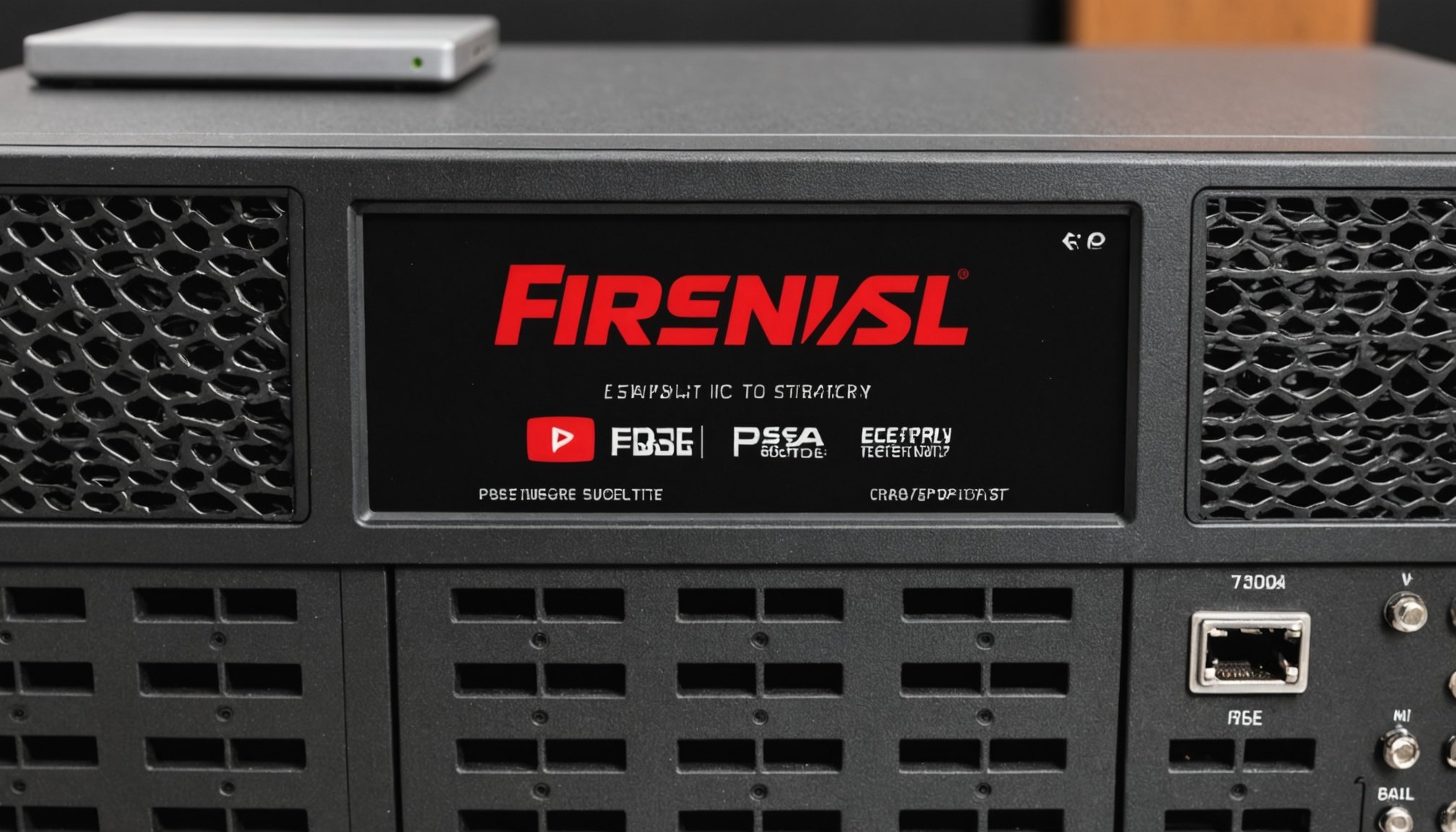Overview of Firewall Importance for Small Businesses
Small business security is increasingly under threat from cyberattacks. This makes understanding the firewall importance imperative for business owners aiming to protect their assets. A firewall acts as a barrier between a business’s internal network and the external internet. Without a firewall, small businesses remain exposed to countless potential threats such as malware, phishing, and unauthorized access. These threats can compromise sensitive data, lead to financial loss, and damage reputations.
To counter these risks, implementing robust cybersecurity measures is essential. A firewall is a first line of defence, filtering incoming traffic and blocking harmful entities. It also provides logs and alert capabilities, allowing businesses to monitor and respond in real-time to suspicious activities.
Also to discover : Comprehensive blueprint for crafting a high-performance media server using nvidia shield tv and external storage options
One practical solution is using pfSense. As an open-source firewall, pfSense offers comprehensive features suitable for small business needs. These include VPN support, traffic shaping, and intrusion detection. It affords businesses the flexibility to tailor cybersecurity measures to their specific requirements without incurring significant costs. In an era where cyber threats are ever-evolving, small businesses can significantly enhance their security posture by incorporating a sophisticated firewall like pfSense within their cybersecurity strategy.
Introduction to pfSense
pfSense is a highly regarded open-source firewall and networking software package, known for its robust capabilities and cost-effectiveness. Initially released in 2004, pfSense emerged from the m0n0wall project, made to provide a flexible choice for network management. Its foundation as an open-source solution presents businesses with the opportunity to adapt and upgrade without incurring high costs.
Have you seen this : Unleash gaming performance: optimizing your ryzen 9 5900x and rtx 3090 in a corsair 5000d airflow case
Core features of pfSense include comprehensive security measures, from standard firewall functionalities to VPN capabilities and network address translation (NAT). These make it exceptionally versatile for small businesses aiming for fortified digital protection. Additionally, the Graphical User Interface (GUI) allows for intuitive management, eliminating the need for specialized IT knowledge.
Small businesses especially benefit from pfSense due to its multi-purpose nature. Beyond just a firewall, it can function as a router, making it a cost-efficient all-in-one solution. This compares favorably to proprietary firewall solutions that may incur licensing fees and limit feature customizability.
Compared with other firewall solutions, pfSense stands out due to its open-source nature, which allows for expansive community support and continuous updates. Its flexibility and security features are often on par with or exceed those offered by costly commercial options, providing compelling reasons for businesses to choose pfSense.
Preparing for pfSense Installation
Preparation is crucial for a successful pfSense installation. Understanding the hardware requirements is the first step. While pfSense can operate on modest systems, optimal performance requires specific hardware recommendations. A dual-core 64-bit CPU is a good starting point. At least 4GB of RAM and a minimum of 8GB storage are advisable, ensuring the efficient handling of tasks.
Equally important are the software requirements. Prior to installation, ensure you have the pfSense installer. This can be downloaded from the official website. You’ll need a compatible bootable USB drive for the installation process. Make sure the network setup is pre-configured, alongside any configurations necessary for your particular infrastructure.
Pre-Installation Considerations
Before proceeding, note the existing network layout. This step helps in adapting pfSense to your setup. Verify all devices and ensure that connections are as required for smooth integration. Evaluate IP addressing schemes and secure necessary login credentials and settings.
Consider these points a guide for the pfSense installation preparation. Adequate attention boosts the likelihood of a seamless setup, positioning your network for enhanced security and performance.
Step-by-Step Installation Process
Setting up a robust firewall system with pfSense can be seamless when following a structured installation process. This pfsense installation guide will walk you through each stage, ensuring your firewall setup is efficient and secure.
Downloading pfSense and Creating Installation Media
First, navigate to the official pfSense website to download the latest version of the software. Ensure you select the appropriate file format for your needs. Next, you need to create a bootable installation media. Use a reliable software, like Rufus on Windows or Etcher on macOS, to turn a USB drive or CD into your installation media. This preparation step is crucial as it makes the system installation smooth and error-free.
Installing pfSense on Hardware
With your bootable media ready, insert it into the hardware chosen for the firewall. Restart the system and boot from the USB or CD. Follow the on-screen prompts to begin the pfSense installation. It is often beneficial to use a dedicated machine for this purpose to ensure optimal performance and security.
Initial Configuration After Installation
After completing the installation, it’s time to configure the pfSense system. Use the setup wizard for initial configuration, setting parameters such as network interfaces, hostname, and administrative password. This step ensures that your firewall setup is tailored to meet specific network security needs.
Configuring Firewall Rules
Effectively managing firewall rules configuration within your network can significantly enhance security. When dealing with pfsense management, understanding the setup for both inbound and outbound traffic is crucial. Firewall rules function as a series of filters that decide which network packets can pass through. Initially, you may rely on default rules, which are set to allow basic operations. However, customizing these rules according to your needs helps in managing specific security controls for your infrastructure.
Inbound rules define what traffic is permissible to enter the network. Outbound rules, conversely, govern the traffic that exits. Establishing specific rules for these directions thwarts potential unauthorized access and leaks. Adjusting network security settings to enforce strong, tailored rules is advised.
Regular updates and audits of firewall rules are essential for ongoing protection. Outdated rules or those improperly configured can lead to vulnerabilities being exploited. By periodically reviewing these settings, you can ensure your security measures align with evolving network threats. Engaging in regular firewall rules configuration audits can prevent unauthorized access and maintain a more secure environment. Pfsense management tools provide interfaces and logs that assist in this continuous process, enabling you to keep track of all changes and their impact on overall security.
Setting Up VPN with pfsense
For small businesses, a pfsense VPN setup brings robust advantages, particularly in maintaining secure remote access. This approach plays a significant role in business networking, safeguarding sensitive operations from potential security breaches.
To begin configuring OpenVPN on pfsense, access the administrative dashboard. Navigate to the VPN section and opt for OpenVPN to initiate the wizard. Within the wizard, configure the server settings, specifying encryption algorithms and client auth methods. Ensure server certificates align with security protocols. After configuring, download the client configuration file for streamlined user connection.
To bolster safety in remote access, businesses must consider multiple security layers. Implement strong password policies and user authentication measures. Enable firewall rules specific to VPN traffic to limit access to only necessary services. Regularly update security certificates for ongoing data protection. Additionally, use two-factor authentication to add an extra security layer, reducing unauthorized entry threats.
Overall, by setting up a pfsense VPN, small businesses not only ensure secure remote access but also enhance business networking infrastructure. This configuration supports seamless, safe connectivity necessary for remote workflows while keeping data confidentiality at the forefront. Secure, efficient, and effective, it is an indispensable tool for modern business operations.
Best Security Practices for Small Businesses
Navigating the realm of small business security best practices involves not only configuring a reliable firewall but also engaging in broader measures. A robust security framework extends beyond firewall maintenance, encompassing regular updates and vigilant monitoring. Ensuring consistent updates for systems, especially for tools like pfsense, is vital to protect against vulnerabilities.
An essential aspect of maintaining overall cybersecurity is continuous firewall maintenance. Regular audits of firewall settings can detect anomalies early, thwarting potential breaches. Implementing a schedule for software updates ensures systems remain shielded against evolving threats. Automating this process can streamline operations and reinforce security.
Employee training stands out as a pivotal component of cybersecurity safeguarding. Offering comprehensive sessions on cybersecurity awareness equips staff to recognize and respond to threats effectively. Enabling multi-factor authentication and strong, unique passwords protects sensitive data across all user levels.
Tips for elevating cybersecurity awareness include:
- Conducting periodic training sessions to refresh knowledge.
- Encouraging reporting of suspicious activities without hesitation.
- Utilizing engaging methods, like simulations, to practice threat detection.
In conclusion, integrating employee education with technology measures forms a cohesive defense strategy for small businesses. Each element, from firewall maintenance to cyber-awareness programs, plays a crucial role in countering digital threats effectively.
Troubleshooting Common Issues
When dealing with pfsense troubleshooting, it’s not uncommon to encounter installation and configuration issues. A frequent problem arises when installations hang due to hardware compatibility. To address this, ensure that your hardware meets the recommended specifications and that you’ve downloaded the correct image for your system architecture.
Connectivity problems often vex users, typically stemming from firewall rule conflicts. These issues might manifest as unexpected network blockages or degraded performance. To handle them, double-check your firewall rules for overlaps or contradictions. Using pfsense’s diagnostic tools, such as the packet capture utility, can offer insights into where the blockage occurs.
For those facing persistent issues, additional support is invaluable. The pfsense documentation site and official forums are treasure troves of support resources. Both offer guidance and community assistance, where experienced users and developers share solutions to common hurdles.
If further expertise is needed, reaching out for professional support can expediate troubleshooting. Engaging with communities like Reddit’s pfsense group can also be beneficial, as they frequently discuss current topics and innovative solutions to pfsense-related issues. Delving into these resources can not only resolve current issues but also empower users with knowledge for future troubleshooting.
Additional Resources and Further Reading
In the quest for robust network security, diving into pfsense resources can be both enlightening and essential. The official pfsense documentation is a treasure trove of knowledge, offering comprehensive guides on setup, configuration, and troubleshooting. Engaging with community forums can provide real-world insights and solutions, as they are frequented by both seasoned users and pfsense experts.
Expanding your knowledge beyond pfsense, cybersecurity articles become pivotal. These articles, particularly those tailored towards small businesses, unveil strategies to strengthen your network’s armour. Understanding how cybersecurity fits into wider business contexts can offer additional protection layers.
For those keen on delving deeper into networking security, a spectrum of webinars and online courses awaits. These educational tools not only refine your skills but also keep you up-to-date with emerging threats and the latest defence mechanisms. In particular, courses focusing on security guidelines can empower administrators with best practices and pragmatic advice.
Navigating the world of networking and cybersecurity requires continuous learning. Leveraging these resources will aid in developing a fortified digital environment, ensuring your network’s safety against ever-evolving cyber threats. Equipped with these tools, users can confidently navigate the intricacies of modern cybersecurity landscapes.










